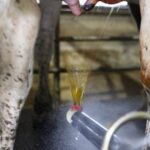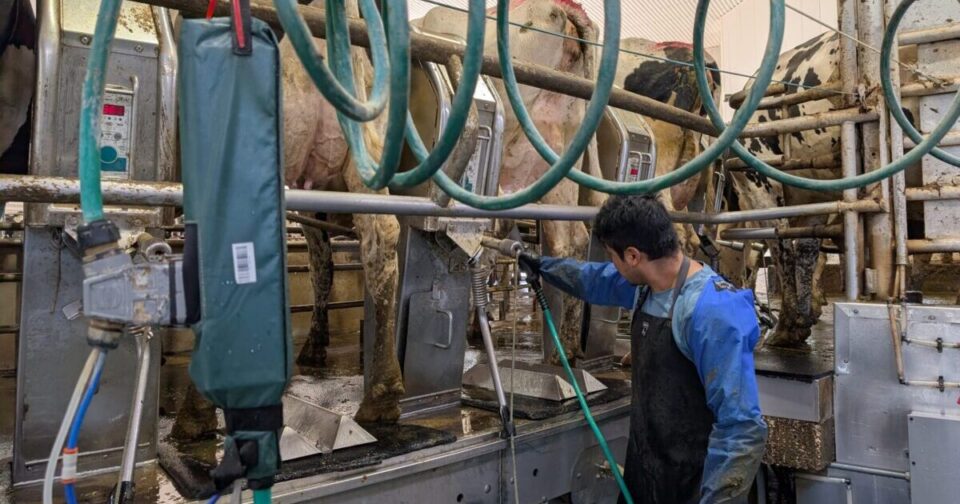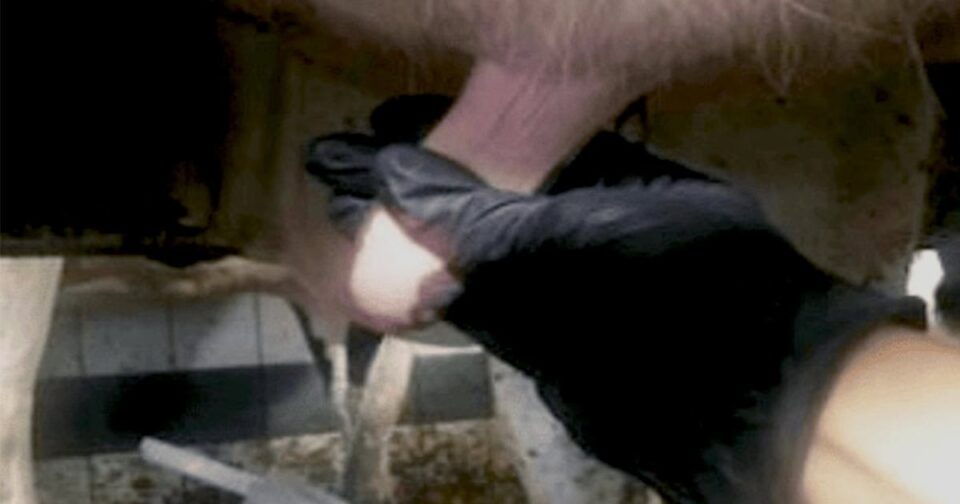
How to Improve Employee Performance on Your Dairy
April 7, 2025
The True Cost of Cutting Corners on Post-Dips
May 1, 2025Milk quality isn’t determined solely by your teat prep routine—many other factors play a crucial role in influencing somatic cell count (SCC) and the incidence of clinical mastitis. Stall management, dry cow care, and heifer management are equally important when it comes to protecting herd health and producing high-quality milk.
Stall & Bedding Management
A clean, comfortable living environment is one of the most critical components of milk quality. Always provide dry, level, and well-groomed bedding to minimize pathogen exposure. Regardless of the bedding type, freshness and comfort are key.
At every milking, clean and groom stalls to remove organic material that can support bacterial growth. Avoid splashing manure into bedding during cleaning—it can directly impact udder health.
Keep an eye on hygiene scores. Dirty legs will inevitably track manure into stalls, increasing the risk of contamination. Consider where a cow’s udder and teats come into contact when she lies down—typically her legs and the bedding—and prioritize those contact points for cleanliness.
Routinely test bedding material for bacterial load. Compare your results to industry benchmarks and your farm’s historical data. Plowing out the back 2–3 feet of stalls annually can help maintain optimal hygiene.
And don’t rely on appearances—even clean-looking bedding may harbor pathogens. It’s essential to test both fresh and used bedding at the microscopic level.
Dry Cow Management
Dry cow tubes shouldn’t be your only line of defense—they’re a tool for managing existing infections, not a substitute for sound management.
Select the right dry cow treatment by knowing the bacteria you’re targeting. A tailored approach improves udder health and reduces infection risk.
Cleanliness in dry cow pens should match that of the milking herd. If cows can track manure into bedding, it’s time to increase your cleaning schedule.
Selective dry cow therapy is only effective if the environment supports udder health throughout the entire dry period—especially the pre-fresh stage when colostrum production begins.
Heifer Management
Managing youngstock properly is essential to long-term milk quality. First-lactation heifers aren’t always “clean”—so monitor their milk performance closely to catch issues early.
As heifers approach colostrum production, bedding and housing conditions become even more critical. The environment at this stage has a lasting impact on udder health.
Fly control is also key—flies can transmit pathogens like Staph aureus and Mycoplasma. Stay proactive in reducing fly pressure on your farm.
Finally, monitor calf and heifer behavior to prevent cross-suckling, which can spread infection. Good nutrition during weaning helps reduce this behavior and promotes better long-term health.
Milk It for All It’s Worth
Even the most precise parlor routine can’t make up for weak housing or heifer management. A whole-herd approach that includes strong environmental management and proactive health monitoring will lead to better milk quality and improved performance across your operation.




